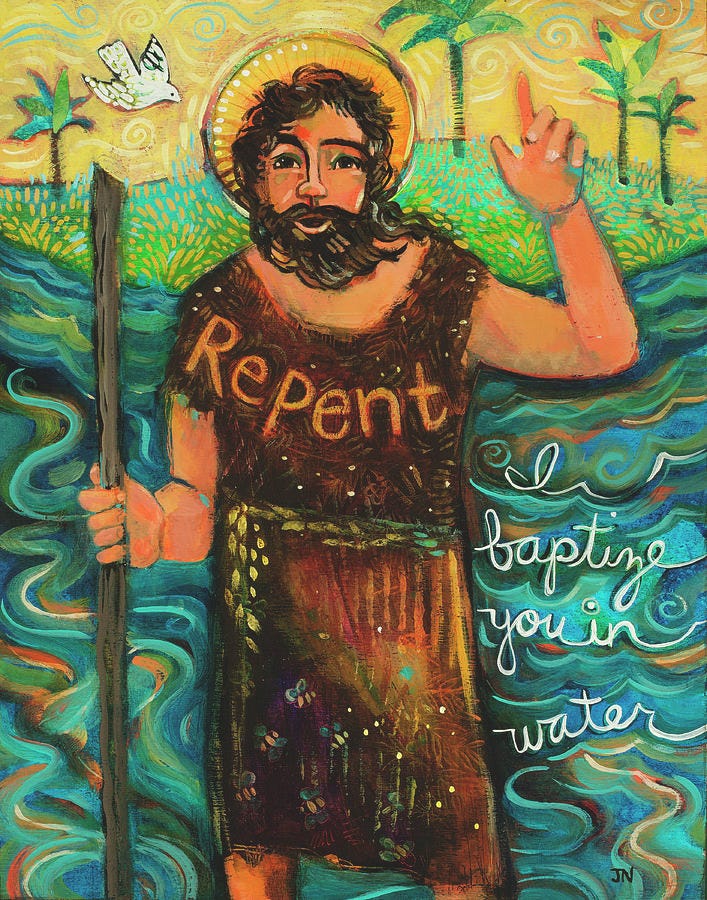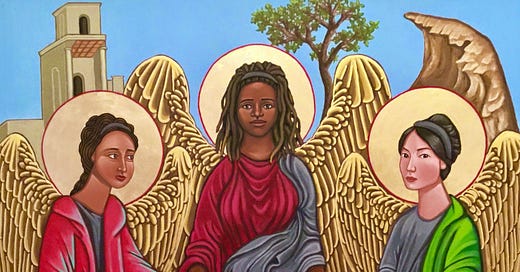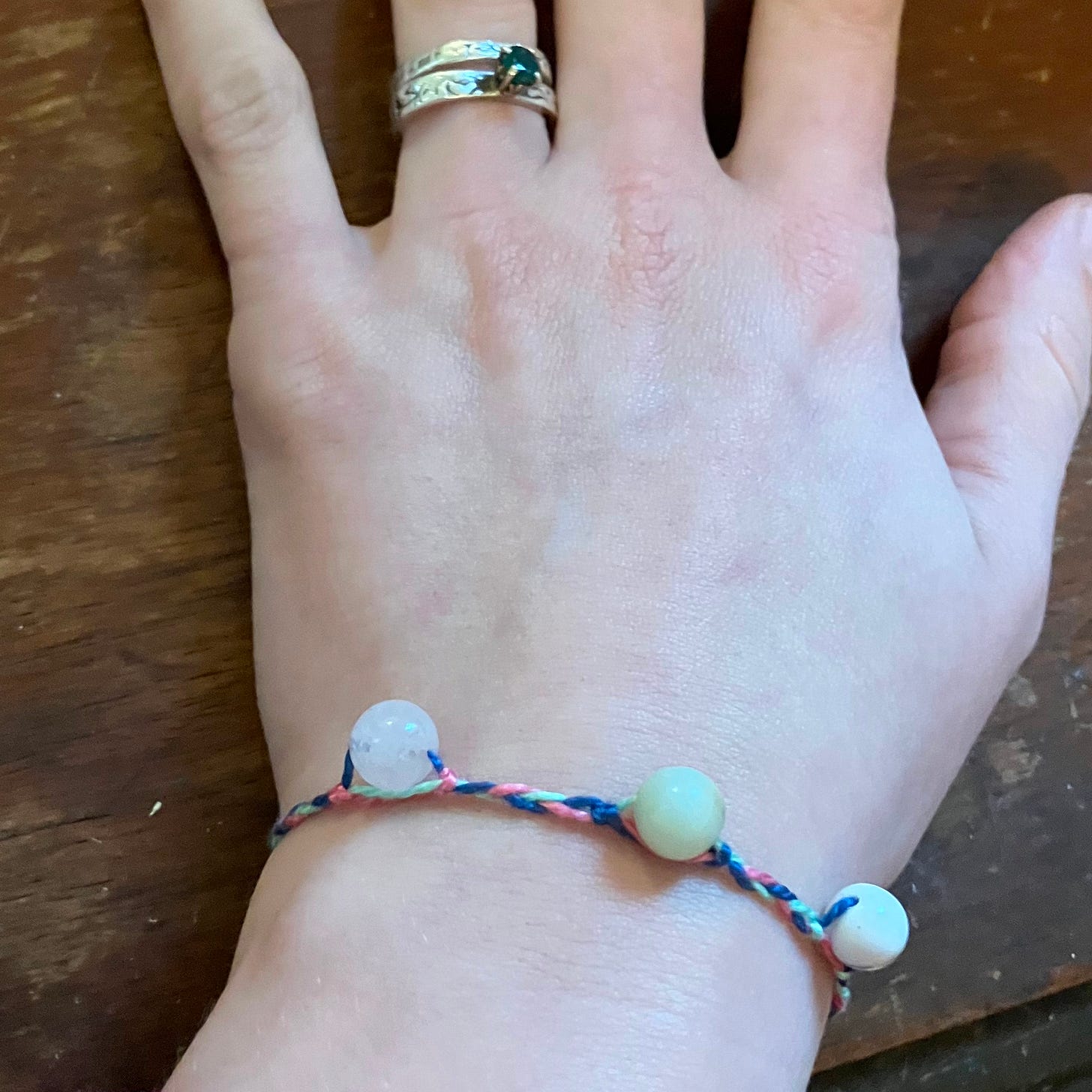Dear Friends,
Ah, Trinity Sunday! The day when we’re all just out here trying not to engage in heresy. My favorite.
But really. I often find my favorite things about this life of faith are the least comprehensible. It’s that essential gap between a belief and understanding.
Of course, those are also the most difficult topics to teach. That part isn’t my favorite.
As I thought about Trinity Sunday this year, I was brought back to a popular contemporary theme: loneliness and connection.
Sacred Friendship
There are a variety of different theological takes on friendship, but taking a step back from the more complicated descriptions, let us think about what friendship is.
Friendship is relational. It is a unity. All entities in it are equal and in order for you to be a friend, another person (or multiple persons) is necessary. Take the other away, and the existence of friendship crumbles. Even where there are multiple friends, if one or more are removed, leaving two behind, the nature of the friendship is fundamentally changed.
The Trinity is not unlike this. Three persons, one God, whose existence is fundamentally relational. God is who God is through the complex interweaving of each of the three persons, particularly because of the essential idea of perichoresis or “mutual indwelling.” There’s no easy way to describe that idea except by the way it feels: like what happens when you call someone else’s heart home. I hope there are so many people whose hearts you feel entangled in and vice versa.
There are other nuances to this idea of mutual indwelling, but I want to sit with this feeling right now. Because if we try to logic the Trinity too much, we walk right into yet another heresy. Best to wonder at it, to imagine what we are in union with our dearest people, our broader communities, and with God. To imagine, even, how each person in the Godhead might feel about this unique variety of connectedness – and about our own intimate but distinct connections with God. These are wonderful things that cannot be known, but which we might hold close to our hearts.
About Friendship & Loneliness
I began this note by citing the “trending topic,” so to speak, of loneliness - of the decline of friendship. In particular, I found myself dwelling on a repost of Anne Helen Petersen’s essay on what she termed the “Friendship Dip.”
Originally published in 2023, but decidedly just as relevant two years on, Petersen looked at Pew Institute data showing that only 38% of American adults said they had five or more close friends. But what was most interesting about that data was the way it shifted with age demographics – while young adults into college and shortly beyond that period generally have a larger number of close friends, that number begins to shifts a bit by our late twenties and early thirties as our lives become more complicated. So, while 49% of adults 65 and up say they have five or more close friends, only 32% of adults under 30 and 34% of those ages 30-49 say the same. If we think about our friendships as being deeply constitutional things, places where we in fact live out the love and community of our faith, this becomes an even more complicated thing. And as parents, caregivers, or other adult role models, it can also make it difficult for us to live out a version of friendship for the children in our lives to learn from.
Of course, children have their own ideas about what constitutes a friendship. There’s the part we as adults still have to remind ourselves about often, which is that calling someone your friend doesn’t make it so. They may really just be an acquaintance or a colleague. Maybe they’re someone who feels like a friend but you know them from the internet and that’s a little dicey. There’s also the pressure of having a “best friend” – what that means to children and to the adults around them.
What were your friendships like as a child? What are they like now? When I was in third grade, my elementary school had to do a dramatic restructuring – the grade was overenrolled and they needed to make a new class – which they did by lottery, pulling two boys and two girls from each existing class. I don’t remember what boys were mysteriously eliminated from my classroom, but the two girls pulled by lottery were my two best friends. I’d known one since preschool and the other since kindergarten. As an extremely shy child, I was devastated. My good fortune was the arrival of another shy, quiet girl from a local Catholic school in my classroom, along with another new arrival; I became friends with both, but particularly with the other quiet girl.
Of course, the next year our social circles were shaken up a bit again, and a few years later we’d split up to different middle schools. By high school I largely considered myself a bit of a “drifter” – I had friends all around, but I didn’t feel anchored anywhere. My best friends by then were my summer camp people; I saw one just a few weeks ago (and immediately texted a picture to two others). We’ve been friends for over 20 years now, even if I wouldn’t count him among my “close friends” to a pew survey.
What defines a friendship as a close one? How do we create them? How do we keep them? I wonder what the complicated and extraordinary nature of the Trinity tells us about these things.
In God And In One Another
This Sunday, one way you might consider marking this unique relationship between the persons of the Godhead and God’s creation - us! – would by by making braided bracelets with three beads integrated in the braid. A Trinity friendship bracelet if you were. You might even make them as a community, put them in a bag, and then each draw one to pray for your community with; you don’t need to know who made it, but might simply use the bracelet as a reminder alongside this week’s prayer:
A Prayer
Holy Lord, three-in-one, yet one above all, through your being, you show us what true love and friendship is. Thank you for creating us to be friends not just with you, but with one another. Help us to live out your love by making special room for friends in our hearts, as you make room for us in your heart, now and always. In the name of the Father, the Son, and the Holy Spirit and your constant unity we pray, Amen.
Resource Round-Up
A few things as school years end and summer routines start:
Kids Ask Dr. Friendtastic! A five-minute friendship write-in show with a clinical psychologist. Even if you don’t have a particular question, Dr. Friendtastic might be just who you need when dealing with teasing, friendship break-ups, and how to be a god friend.
Folks have been passing around these five questions to ask when visiting churches with kids. They’re good questions, but I think in many ways they are better questions for us to ask about our own contexts, especially because they can be tricky questions to actually answer about a new parish. But they’re questions we *should* be able to answer about our own churches and, more importantly, if we’re not happy with the answers as borne out by evidence, then we need to do the work to recalibrate.
The Nativity of John the Baptist is just two weeks away. on June 24, the longest day of the year! Last year I had a blast celebrating this event with my church school kids – we baked birthday cupcakes with little bee toppers (honey in the wilderness), mud cups with earthworms (locusts were a bit of a reach), and learned a little more about Jesus’s cousin. At home, you might make honey cakes, find a river or lake to dip your feet in in honor of John’s baptizing work, and read some of the stories of John from the Bible.
Another option: build a bee bath for your local pollinators! John needed to get his honey from somewhere!
St. John the Baptist by Jen Norton Building on some previous referrals to We Choose Welcome and past writing about talking to children about scary things (usually gun violence, but right now I’m thinking about the National Guard being called in in Los Angeles), I want to offer the power of Elizabeth Ashman Riley’s Rage Prayer again – particularly for older children, but really as a practice for all ages.
As this Rage Prayer for the Children of Gaza shows, we can be so angry in our prayers to God. We can shout our prayers at God. You might even lean into the idiom of anger being like fire and write or draw your angry prayers about injustice and burn them. There is room for all of it in how we pray to God. And giving our anger a place is often a first step towards the next action – the calls to our leaders, the protest signs, all of it.
That’s all for now. I’ll be back next week and then I’ll be taking the following week off while I’m away doing a training program.
Peace,
Bird






